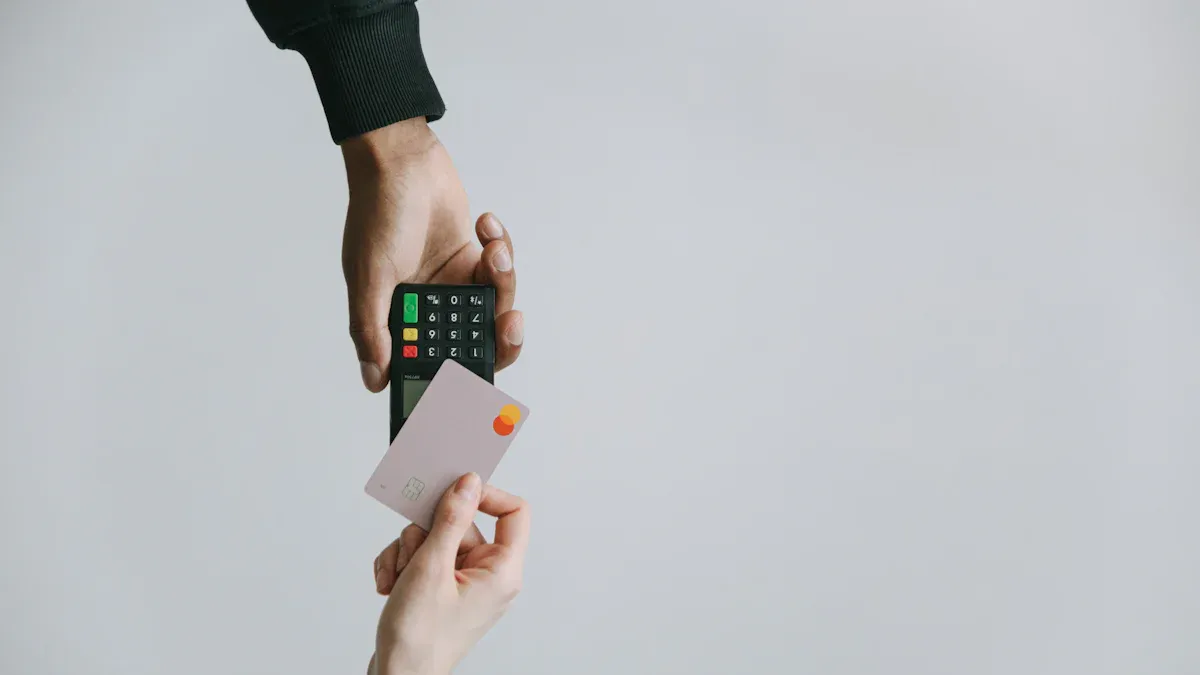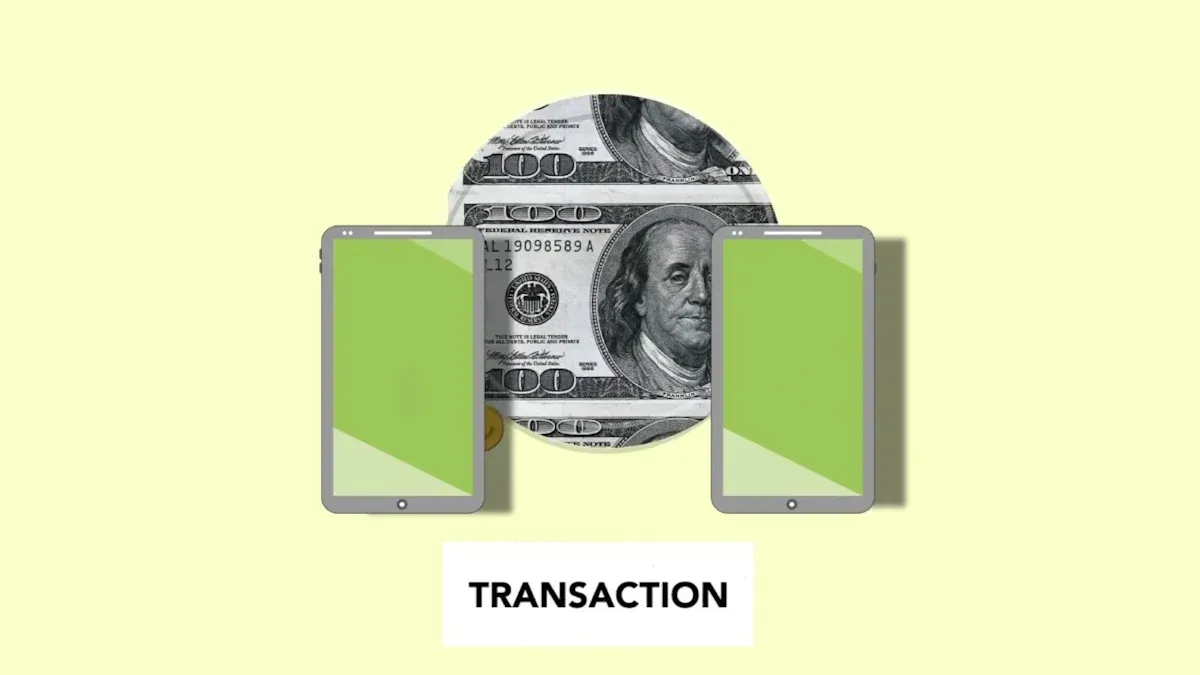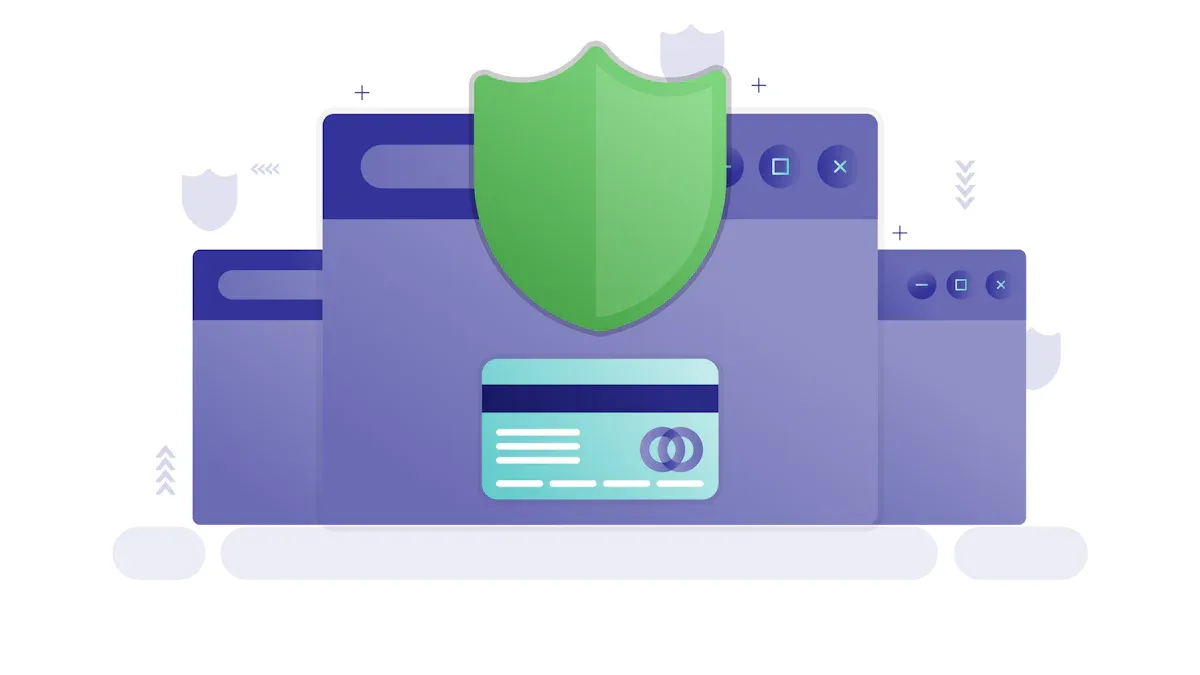- EasyCard
- Trade
- Help
- Announcement
- Academy
- SWIFT Code
- Iban Number
- Referral
- Customer Service
- Blog
- Creator
What is a bank routing number and how to ensure the safe transfer of funds?

Image Source: pexels
Think of a bank routing number as the “postal code” for your funds. This 9-digit number ensures your money is accurately delivered to any bank within the United States.
Did you know? According to the American Payroll Association, nearly 93% of U.S. employees receive their wages via direct deposit, and this is one of the most common uses of a routing number.
In fact, all these electronic transfers are processed through the Automated Clearing House (ACH) network, which handles an enormous volume of transactions:
Key Takeaways
- A bank routing number is a 9-digit code that ensures your funds are accurately delivered to banks within the U.S.
- You can find your routing number on paper checks, online banking, bank statements, or the bank’s official website.
- Distinguishing between ACH and wire transfer routing numbers is crucial, as they are used for different types of transfers.
- Always verify the routing number and account number to avoid transfer errors and potential loss of funds.
- Protect your routing number and account number, stay vigilant against fraud risks, and avoid sharing them with untrusted individuals.
What Is a Bank Routing Number?

Image Source: pexels
Definition and Purpose of a Routing Number
A bank routing number (Routing Transit Number, RTN) is a 9-digit code. The American Bankers Association (ABA) created it in 1910. You can think of it as a unique ID number for financial institutions in the U.S. Its core purpose is to ensure that funds, when transferred between banks, are accurately delivered to the correct destination.
When you make an electronic transfer, this number tells the system which bank to withdraw funds from and which bank to deposit them into. It works in tandem with your personal bank account number to form a complete payment instruction.
- Identifying Financial Institutions: The routing number precisely identifies the specific bank or credit union where you have an account.
- Processing Diverse Transactions: It supports various financial transactions, including paper checks, electronic transfers, and automatic payments.
- Authorizing Fund Transfers: When setting up automatic payments (such as utility bills or loan repayments), you need to provide the routing number and account number to authorize merchants to deduct funds from your account.
Structure of a Routing Number
Each of the 9 digits in a routing number contains specific information, designed with precision to enhance processing efficiency and reduce errors.
| Digit Position | Meaning | Description |
|---|---|---|
| Digits 1-4 | Federal Reserve Routing Symbol | These four digits designate the Federal Reserve Bank region where the funds are cleared. |
| Digits 5-8 | Financial Institution Identifier | These four digits are a unique code for the bank where you have your account. |
| Digit 9 | Check Digit | This is a number generated through a special algorithm to verify the accuracy of the preceding 8 digits. |
Check Digit: Your First Line of Defense
The 9th check digit is a “security guard” against errors. The system calculates it using a weighted algorithm called “371 371 371.” This simple validation step can detect nearly all single-digit input errors and about 90% of digit transposition errors, catching many potential issues before a transfer is initiated.
Common Use Cases
In everyday life, you’ll encounter bank routing numbers in many scenarios. Understanding these scenarios can help you handle financial matters with confidence.
- Receiving Wages and Government Benefits This is the most common use. When setting up direct deposit for your paycheck, your employer needs your routing number and account number. Similarly, if you want to receive a tax refund from the IRS via direct deposit, you must provide these details accurately.
- Setting Up Automatic Bill Payments For convenience, you can authorize service providers (like utility companies, phone companies, or gyms) to automatically deduct payments from your bank account. This process, known as ACH (Automated Clearing House) payment, requires you to provide your routing number to establish the connection.
- Performing Domestic Wire Transfers When you need to quickly send a large amount to another person or company within the U.S., a domestic wire transfer is a common option. To initiate a wire transfer, you must provide the following information:
- The recipient’s full name and address
- The recipient bank’s name
- The recipient’s bank account number and routing number
- Linking Third-Party Payment Apps Popular payment tools like Zelle, Venmo, or Cash App also require your bank details to link an account. For example, when you manually add a bank account to Venmo, it sends two small deposits (e.g., $0.05 and $0.12) to your account for verification. You need to confirm these amounts in the app to prove you own the account. This verification process also relies on your routing number and account number.
How to Find a Bank Routing Number?
Finding your bank routing number is straightforward. You can quickly locate it through several official channels to ensure accuracy. Here are the five most reliable methods.
Check Your Paper Check
If you have a checkbook, this is the most direct method. At the bottom edge of a U.S. personal check, there are typically three sets of numbers.
The routing number is usually the first set of 9 digits on the bottom left. The middle is your personal account number, and the right is the check number.
Log in to Online Banking or App
This is one of the most convenient and quick methods. Most banks display account information clearly on their digital platforms. For example, with Chase Bank, you can follow these steps:
- Log in to your Chase bank account (online or via the app).
- Select the account you want to view.
- Click “Show Details” or “Account Details.”
- Your account and routing numbers will be displayed below your current balance.
Other banks’ apps or websites offer similar pathways, typically under “Account Details” or “Account Summary” pages.
Review Bank Statements
Your bank’s monthly or quarterly statements (whether electronic or paper) also include the routing number. Usually, you can find this 9-digit number at the top or bottom of the first page, listed alongside your personal account information.
Visit the Bank’s Website
Some banks list routing numbers on their official website’s public pages, especially in the “Frequently Asked Questions (FAQ)” or “Help Center” sections. You can also log in to online banking and find the information on the transfer or direct deposit setup page.
Important Note: Be aware that some large banks may use different routing numbers in different states or regions. Ensure the number you find corresponds to the region where you opened your account.
Contact Bank Customer Service
If the above methods don’t work or you’re unsure which number is correct, the safest option is to contact your bank directly. You can call the customer service number on the back of your bank card or reach out via online chat. They will verify your identity and provide accurate information.
Safety Tips for Using Routing Numbers

Image Source: unsplash
Knowing how to find your routing number is just the first step; using it safely is even more critical. A small oversight could lead to delayed funds, losses, or even theft. Be sure to keep the following key safety tips in mind to safeguard your fund transfers.
Distinguish Between ACH and Wire Transfer Numbers
You might assume a bank has only one routing number, but that’s not always the case. Banks sometimes require you to use different routing numbers for different types of transfers.
Many banks provide separate routing numbers for ACH transfers (used for direct deposits, bill payments, and other electronic transactions) and wire transfers. Although both are 9-digit ABA numbers, their internal processing paths differ.
Important Note: Verify Carefully
Before initiating a transfer, always confirm with your bank to ensure you’re using the correct number for the specific transaction type (ACH or wire). Using the wrong number could result in your transaction being rejected or returned, causing unnecessary delays.
Verify Routing and Account Numbers
Input errors are one of the most common reasons for transfer failures. Even a single incorrect digit can lead to serious consequences.
- Transaction Delays: If you use the wrong number when setting up direct deposits or bill payments, funds won’t arrive on time. This could cause you to miss payment deadlines or incur late fees.
- Misdirected Funds: In the worst case, funds could be deposited into someone else’s valid account. Recovering such funds can be a complex and lengthy process.
- Outdated Information: Sometimes, the error isn’t your fault. Banks may change routing numbers due to mergers or system updates. Using outdated information can also cause transactions to fail.
Fortunately, many verification mechanisms can help you avoid these errors. For example, when adding a bank account to some platforms, the system sends two small deposits (e.g., $0.03 and $0.05) to your account for verification. Additionally, many transfer systems display the corresponding bank name after you enter the routing number, offering a chance for secondary confirmation.
What to Do If You Enter the Wrong Number?
- Act Immediately: If you notice an error, contact your bank or transfer service provider right away. If the funds haven’t been sent yet, you may still have a chance to correct the information.
- Initiate Recovery: If the funds have already been sent, the bank will need to step in. You’ll need to work with your bank, which will contact the recipient’s bank to attempt to recover the funds.
- Be Prepared: Understand that recovering funds is not guaranteed. If the funds have reached another account and been withdrawn, the bank may not be able to force a return. In such cases, this could become a civil matter between you and the recipient.
Beware of Potential Fraud Risks
Your bank routing number and account number are highly sensitive information. If they fall into the wrong hands, fraudsters can engage in various fraudulent activities.
| Fraud Type | Specific Actions |
|---|---|
| ACH Fraud | Criminals can use your account details to initiate unauthorized ACH transfers, withdrawing funds from your account or setting up automatic bill payments. |
| Forged Checks | They can create fake paper checks and use them for purchases or cash withdrawals, stealing funds from your account. |
| Identity Theft | Combined with other personal information, criminals may use your bank details for tax fraud or to open new credit cards in your name. |
| Unauthorized Purchases | On some websites that only require a bank account and routing number for payment, they can directly spend from your account. |
Fraudsters often use phishing techniques to steal this information. They may pose as banks, government agencies (like the IRS), or well-known companies, sending seemingly legitimate emails, texts, or making phone calls.
Safety First Line of Defense
Remember: Your bank will never request your full account number, password, or PIN via unsolicited emails, texts, or phone calls. If you receive such communications, hang up or delete the message immediately, then contact your bank directly through its official website or the phone number on the back of your card to verify.
If you suspect your bank information has been compromised, take the following steps immediately:
- Contact Your Bank: Notify your bank immediately to freeze your account and report any suspicious transactions. Typically, reporting unauthorized transactions within 48 hours of discovery can limit your liability to $50.
- Change Passwords: Immediately change the passwords for your online banking and any related accounts.
- Enable Multi-Factor Authentication (MFA): Activate a second layer of security for your bank account, such as SMS verification, fingerprint, or facial recognition.
- Monitor Credit Reports: Check your credit report for any unknown accounts opened in your name.
- Report to Authorities: Submit a report to the U.S. Federal Trade Commission’s IdentityTheft.gov website for official recovery guidance.
Domestic vs. International Transfers
Bank routing numbers are a U.S.-specific “ID” used exclusively for domestic financial transactions. When you need to make international transfers, you’ll use a completely different system.
International transfers rely on SWIFT codes (also known as BIC). This is an 8- or 11-character code (a combination of letters and numbers) used to identify banks globally.
| Feature | Routing Number | SWIFT/BIC Code |
|---|---|---|
| Length | 9 digits | 8 or 11 characters (letters and numbers) |
| Purpose | U.S. domestic transfers | Global international transfers |
| System | Serves the U.S. domestic clearing system | Serves the global Society for Worldwide Interbank Financial Telecommunication network |
| Interchangeability | Cannot be used for international transfers | Cannot be used for U.S. domestic ACH or standard check processing |
Thus, when receiving an international transfer to your U.S. bank account, you need to provide the following information instead of your regular routing number:
- Your bank’s name and address
- Your full name and account number
- Your bank’s SWIFT/BIC code
Using a U.S. domestic routing number for an international transfer will result in a failed transaction.
Correctly using bank routing numbers is a critical step in ensuring secure and efficient fund transfers. Input errors are one of the main causes of delayed or failed transfers. Therefore, always double-check information through official channels like your bank’s website or customer service.
Spending an extra minute to verify before clicking “confirm transfer” can save you unnecessary trouble and risks.
FAQ
Is It Safe to Share My Routing Number?
You can provide your routing number for legitimate transactions like direct deposits or bill payments. However, only share it with trusted entities. It works in conjunction with your account number, so handle it carefully to prevent unauthorized deductions.
Do All Accounts at the Same Bank Use the Same Routing Number?
Typically, multiple accounts at the same bank (such as checking and savings accounts) share the same ACH routing number. However, wire transfers or specific regions may use different numbers. Always verify through your bank’s official channels.
What Happens If I Use the Wrong Routing Number?
Using the wrong routing number can lead to a failed or delayed transaction. In the worst case, funds may be sent to the wrong bank. If you notice an error, contact your bank immediately, and they will assist you in resolving the issue.
*This article is provided for general information purposes and does not constitute legal, tax or other professional advice from BiyaPay or its subsidiaries and its affiliates, and it is not intended as a substitute for obtaining advice from a financial advisor or any other professional.
We make no representations, warranties or warranties, express or implied, as to the accuracy, completeness or timeliness of the contents of this publication.




Contact Us
Company and Team
BiyaPay Products
Customer Services
is a broker-dealer registered with the U.S. Securities and Exchange Commission (SEC) (No.: 802-127417), member of the Financial Industry Regulatory Authority (FINRA) (CRD: 325027), member of the Securities Investor Protection Corporation (SIPC), and regulated by FINRA and SEC.
registered with the US Financial Crimes Enforcement Network (FinCEN), as a Money Services Business (MSB), registration number: 31000218637349, and regulated by FinCEN.
registered as Financial Service Provider (FSP number: FSP1007221) in New Zealand, and is a member of the Financial Dispute Resolution Scheme, a New Zealand independent dispute resolution service provider.



















